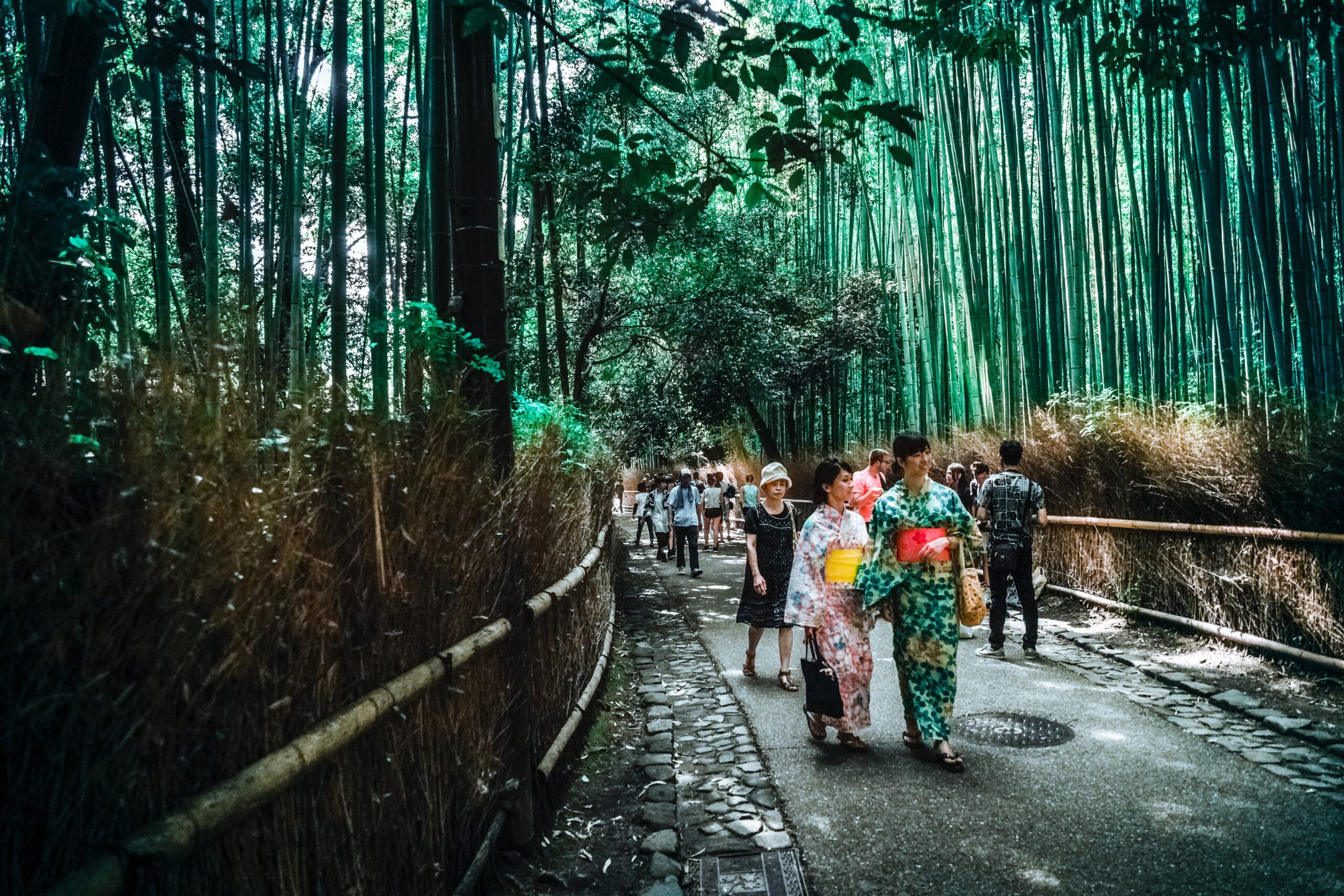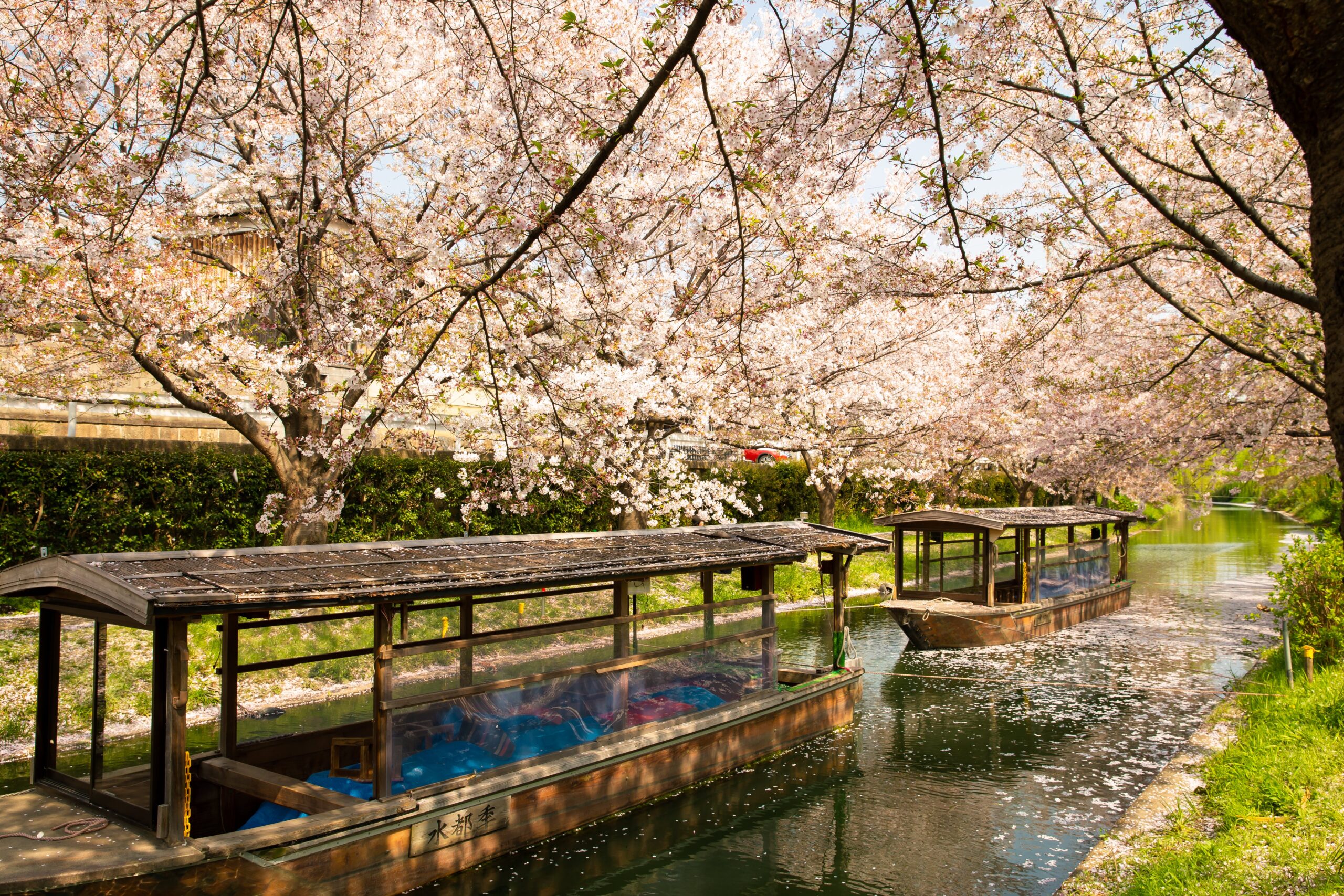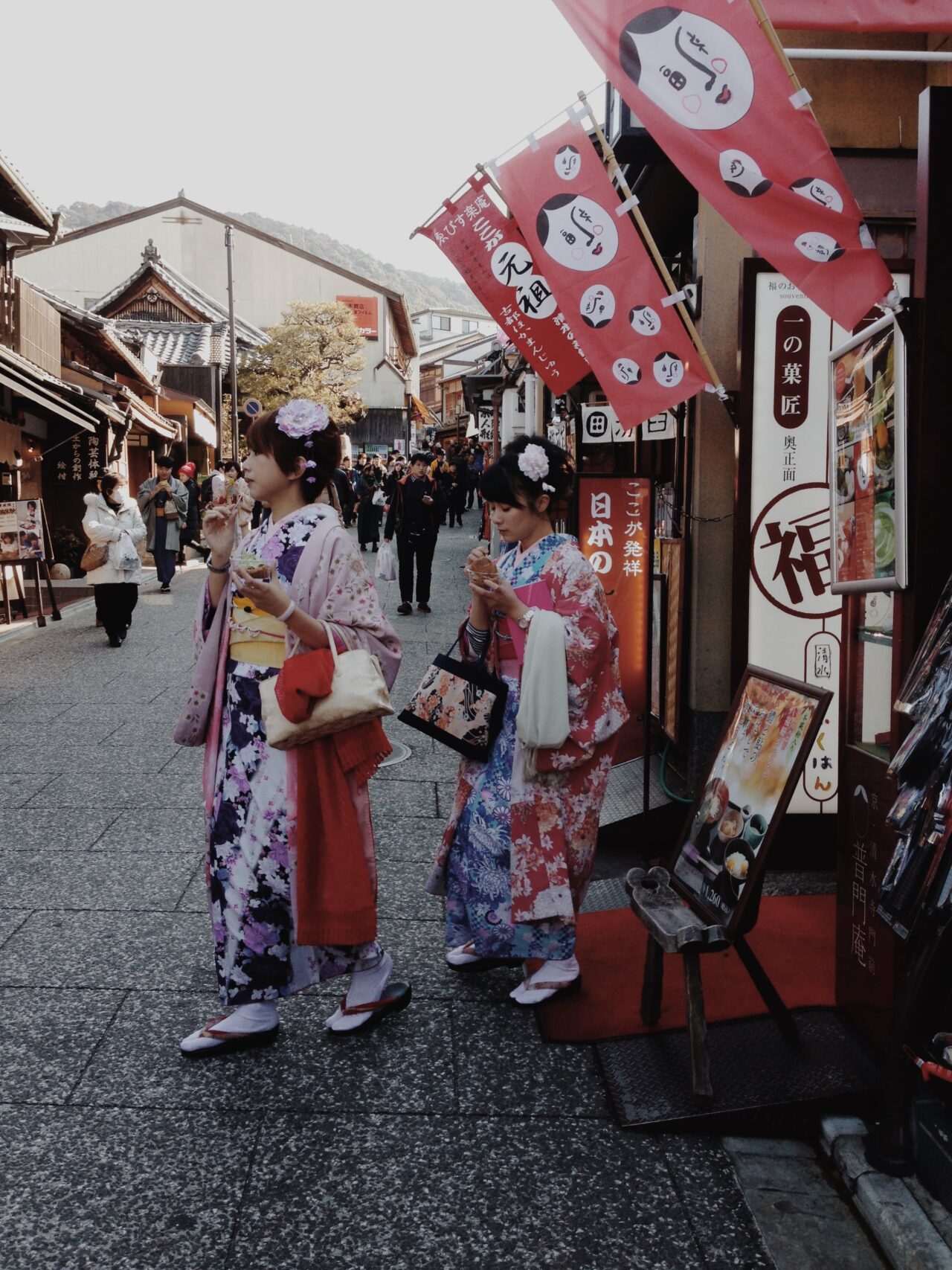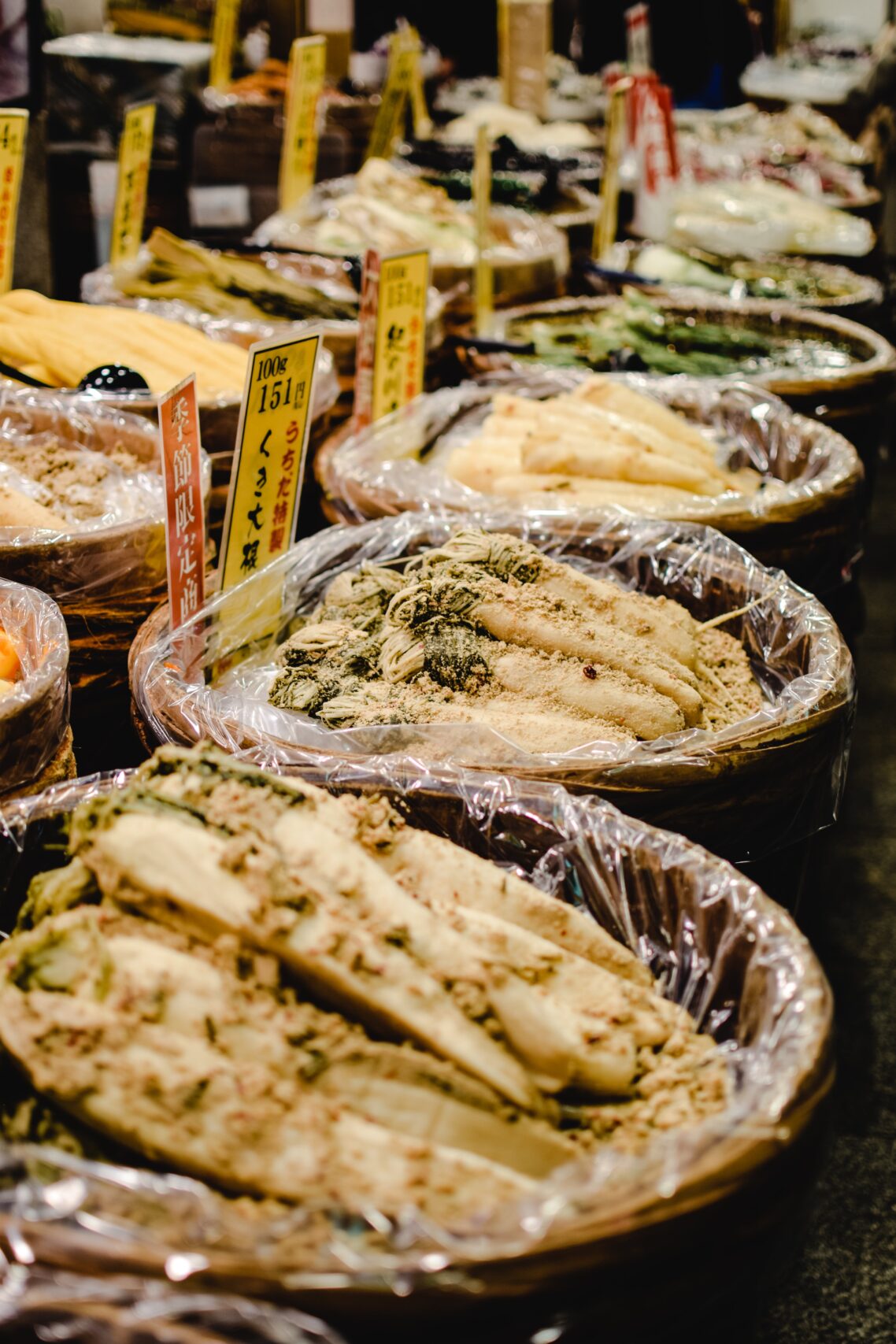Kyoto Takes Centre Stage
Written by Chloe Hambidge
Whether stepping off a luxury cruise ship ticking off Japans acclaimed beauty one port at a time, or travelling far and wide to explore the all countries hotspots- this is the guide for you. When talking about the honey-pot of culture Japan holds dear, we could go on forever. So, here is a snippet on the delights of Kyoto, so you don’t miss a thing. From avoiding the crowds and seeing the city for what it truly is, to exploring the hotspots tourists go crazy for. At Atlantis, no stone is left unturned.
Behind the scenes
An elevated temple experience for all the senses
With more World Hertiage Sites then we have hands to count, taking in all the temple temptation Kyoto has to offer is a wheel of fortune of exploration. The luminous presence of the Kinkakuji Temple may call your name (as well as a flock of other tourists). Meaning Golden Pavilion, this temple shimmers as much as its name entails. People also make a bee line for the Kiyomizu Temple, built in godlike glory over the city for the goddess of mercy, the water is said to offer wish-granting properties and bestow either longevity, academic success, or luck in love depending on which stream you choose. For extra help in your love life, head to Jishu shrine behind the main hall. In front of it are two large stones, and walking between them with your eyes closed is said to bless you with true love. You may even get the first glimpse of that feeling when you step out onto the temples pavilion, offering panoramic views of the city below. All these hotspots have understandable acclaim as they stand in regal beauty, but to take in mindfulness and true Buddhist faith in peace hotels including Aman Kyoto and The Shinmonzen host private visits to the cities equally precious hidden temples. Whether indulging in the tranquility of shinrinyoku (forest bathing) or a charming tea ceremony amongst Koetsu-ji’s maple trees- it will be the epitome of Japanese hospitality.

At one with the artisans.
With any creation being seen as a creative outlet in Japan, it won’t be hard to stumble upon a revolutionary ‘Shokunin’ meaning artisans. These people dedicate their lives to mastering their craft and it is sure to reflect in their work. Chiemi Oguri’s journey of being a bamboo craftswoman has been in her blood for as long as she can remember, after watching her parents precisely piece together tiny components, Oguri was ultimately inspired at school where she learned about traditional Japanese art and environmentalism. This was the start of her bamboo weaving journey. Admire her work in exhibition and displays across Kyoto, Osaka and Tokyo. Shinji Sekizuka is also a noble Shokunin, being a designer and maker of traditional Japanese footwear and ‘zouri’ sandals. Always staying true to their authentic routes each piece of custom made by his very own hands in his beautifully converted workshop and showroom. For more from Kyoto’s craftspeople, be sure to pay a visit to the Nishijin Textile Center to learn all about Kyoto’s longstanding textile tradition.

Take a hike
There’s always something to awe at in Kyoto city, that mixed with the vantage point of the Arashiyama mountains? It’s a match made in heaven. What better way to take in Kyoto then by foot, where nothing can be missed. Strolling along the Hozu River or trekking through lush Arashiyama Bamboo Grove, it will be an authentic journey of peace and unspoilt discovery. Or, head into the hills via the Kyoto Isshu Trail where you wander the whole compass of Kyoto through its eastern, northern, and western edges via mountains, forests and rice paddies. Even break the route into segments to truly take in each spectacle with popular choices being the Diamonjiyama route, providing sweeping views of the city- minus the crowds. Another option in this lucky dip of hiking opportunities is Mount Atago, Kyotos highest mountain. Crowned one of the best day hikes in the city, this off the beaten track experience offers wildlife encounters and a feeling of pride and gratitude after its completion.

Cherry Blossom bliss
Yodogawa Riverside Park, Kyoto
Holding its cultural heritage dear, Kyoto is a beautifully preserved ancient town. Guaranteed to transport you to a tranquil slice of Japans roots, where better to celebrate the quaint delight of the cherry blossom. To hide from the crowds and watch the clouds of powdered pink sway in the breeze, chase to the outskirt of Kyoto to Yodogawa Riverside Park. Nestled near the border of Osaka, stumble upon an ongoing archway stretching 1.4 kilometres of pale pink clusters blossoming every spring. This peaceful pink tunnel is the perfect place to relax away from the city bustle and absorb the magic of Hanami (viewing cherry blossoms once they’re in full bloom). Indulge in a picnic with friends or family on the lawn by the river where the lull of the water and transient cherry blossoms come together to make a memorable and magical Japanese experience- be sure not to miss the cherry blossom festival, Sawaritei Sakura Matsuri, held during the season with several stalls serving local food and drinks joining the event.

Fashion-first boutique wonder
With self-expression being something of a driving force amongst Japans charm, fashion goes hand-in-hand with this creative outlet hotspot. With a plethora of traditional and contemporary retail on offer, it’s safe to say you won’t be short of places to spend your Yen, but to truly admire the works of creativity, many aging building are now creeking your name. Many derelict buildings are transforming with brands and labels turning their ideas towards traditional machiya architecture, including the iconic Issey Miyake. Alongside Naoto Fukasawa, notorious interior designer who have teamed together to transform a 132-yearold townhouse into a new store and gallery space. Here, exhibitions will be held showcasing the stories behind the label’s most popular products. A dream for fashion and design fanatics. Another hub of this creative genius is y Gion, a multi-facility hotspot holiday a tantalizing mix of art exhibitions, live music and a rooftop bar with panoramic views of Kamo River.
In the spotlight
Garden-hop at Ginkaku-ji
Go for gold disguised as Silver. Ginkakuji, translating to Silver Pavilion, embodies all things wabi-sabi which finds beauty in simplicity. Culturally, Kyoto has always been about patience, restraint, quiet. The idea is to cut out the noise and appreciate the little things, the finer things.’ A visit to this temple and its clusters of idyllic gardens is the epitome of this logic. In 1482, shogun Ashikaga Yoshimasa built his retirement villa on the grounds of today’s temple, modeled after Kinkakuji (Golden Pavilion), his grandfather’s retirement villa at the base of Kyoto’s northern mountains (Kitayama). The villa was converted into a Zen temple after Yoshimasa’s death in 1490. Deserving of all it’s acclaim, people flock here to admire Ginkakuji’s main building as well as scatterings of smaller temple buildings, a moss garden and a beautiful Zen garden in which the focal point is a mound of sand representing Mount Fuji. Meticulously kept and emitting the wonder amongst transience and imperfection, meander between lush gardens, small ponds and islands linked by stone bridges. It’s a fantasy forest of traditional Japanese history.

Wander historic Gion
Where Geisha thrives and backstreets come to life, Gion is an atmospheric puzzle of charming backstreets and authentic townhouses. Geisha are professional entertainers who attend guests during meals with dance and music in the art of communication. As you wonder this labyrinth of narrow lanes come face to face with vibrant kimonos and immaculate head-turning makeup, all the things that make Geisha so special ever since the Edo period. A relic cherished as if a museum peice, this destination is part of history. Lined with art galleries, charming teahouses and shops boasting local arts and crafts, whilst still paying homage to the faith with temples and shrine taking pride. Even in the midst of the 21st century, it’s still the best place to escape the modern world and become intune with history long since forgotten.

Take a food safari at Nishiki Market
A kaleidoscope of flavours and scents, get front row seats into ‘Kyotos Kitchen’ where the word super market has never made more sense. Nishiki Market is made up of five blocks, narrowly filled with anything food related from fresh seafood, produce, knives and foodware as sharp as samari swords, it’s where traditions come out to play after feeling discarded for centuries. Oozing the ambience of old Japan, culinary delights paint the stools with vibrant spices and traditional dishes. Feel as if invited over for a family dinner, as the locals congregate to get the best of the best, even taste the finished product from one of the markets street-food stalls. Bizarre and brilliant, there’s always something unique to see in Kyoto.

Find Shinto perfection at Fushimi Inari Taisha
Shadowed by the sacred Mount Inari, wander this canopy of glowing red torii gates. Vibrant and meaningful these rows are called Senbon Torii (‘thousands of torii gates’) are a trail of donations by individuals and companies, you will find the donators name and date of donation inscribed on the back of each gate, with the aim to encourage the gods to be generous with luck and prosperity. Nestled in amongst the monumental gates are hundreds of miniature versions offered by those with smaller budgets. Becoming something of an ionic destination photographed by many. Seemingly protected by foxes, statues domineer the vast grounds. Said to have been messengers of Inari, these loyal companions are all over the grounds. This vermillion shrine is arguable Kyotos most popular Shinto shrine, travelling up the mountainside is an experience in itself.

Take in the scenery at Arashiyama
Last but certainly not least, take in a whole other side of Kyoto. Seemingly cut off from the outside world, this scenic, temple filled district of Arashiyama will sweep you off your feet. Nestled amongst the western outskirts of Kyoto it’s a bewitching place to explore. All centered about the Togetsukyo bridge, the simplistic charm of this rural district is a breath of fresh air. Rent bikes at the train stations to feel as if in a movie with cherry blossom falling at your feet, or stroll freely though sprawling bamboo groves. Highlights include the Tenryu-ji temple, where ongoing landscaped gardens perfectly encapsulate the concept of shakkei (borrowed scenery). With a back drop of mountains and tantalizing buddhist cuisine offered inside temples, it’s a party for all the senses.




